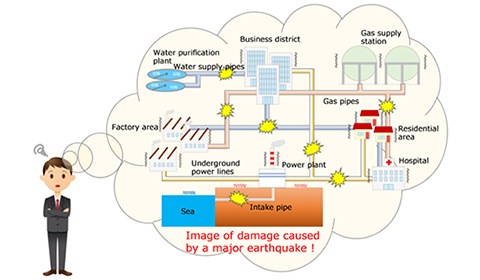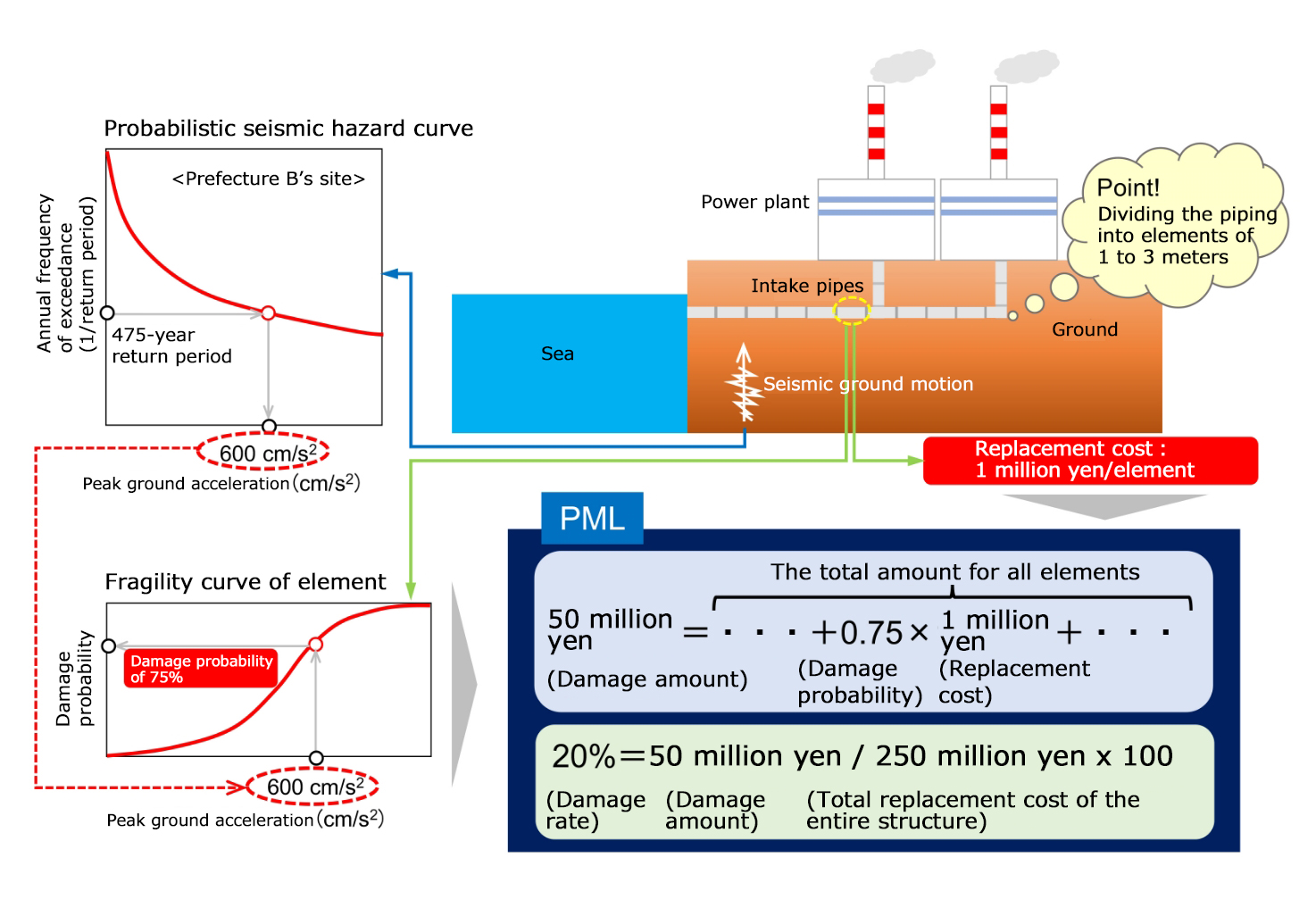Visualizing the risk and value of underground componentsProbabilistic Seismic Risk Assessment of Buried Linear Structures
- Disaster Prevention
- Infrastructure
- Maintenance & Management
The extent of damage caused by the largest earthquake expected to occur during the in-service period of structure is expressed as a percentage of the structure’s reconstruction cost (the total cost to rebuild all parts of the structure at once).
The seismic loads to be considered is based on the largest seismic ground motion that can occur with a 10% probability of exceedance in a 50-year period (i.e. a major earthquake once every 475 years) typically. PML, which is often used for building performance evaluations, is used for this assessment as well.

Point
- High risk parts of damage in the structure are visualized detailedly due to dividing into small sections.
- Optimal rebuilding planning, design, and construction can be performed for buried structures.
- It can be also used for assessment after seismic reinforcement and for maintenance and management.
Overview of Probabilistic Seismic Risk Assessment
of Buried Linear Structures
For all kinds of buried piping (gas pipes, communication cables, etc.)
The water conduits in thermal and hydroelectric power plants are long, narrow pipes, some of which can run for several kilometers. For this reason, the materials, construction, and surrounding ground characteristics of a single structure may not be homogeneous from place to place. Therefore, the PML of the entire structure is calculated by dividing it up into elements of 1 to 3 meters, evaluating each element, and totaling the results.
The procedure is as follows:
1:Develop fragility curve for each element
2:Calculate the loss ratio and loss amount for each element
3:Calculate total losses for the entire facility by adding losses of individual elements
4:Calculate the loss ratio by dividing total losses for the entire facility by rebuilding cost
5:Calculate the loss ratio and PML value by performing 1 through 4 with the total stress analysis and the effective stress analysis (*2)
*For more details on each of the above items, please refer to “Detailed information on this service.”

Although the relationship between PML and earthquake damage for civil engineering structures still hasn’t been clarified, the PML value for buildings which were built after 1981 and conform to the amended building standard law (standard for earthquake resistant design after 1981 in Japan) is generally around 10-20%. Thus, 20% is considered to be one benchmark for this assessment.
We believe that one of the features of this assessment is that it provides two options, one to rebuild the entire structure based on the loss rate of the entire structure and the other to make repairs/reinforcement to the necessary parts based on the loss ratio of each element.
